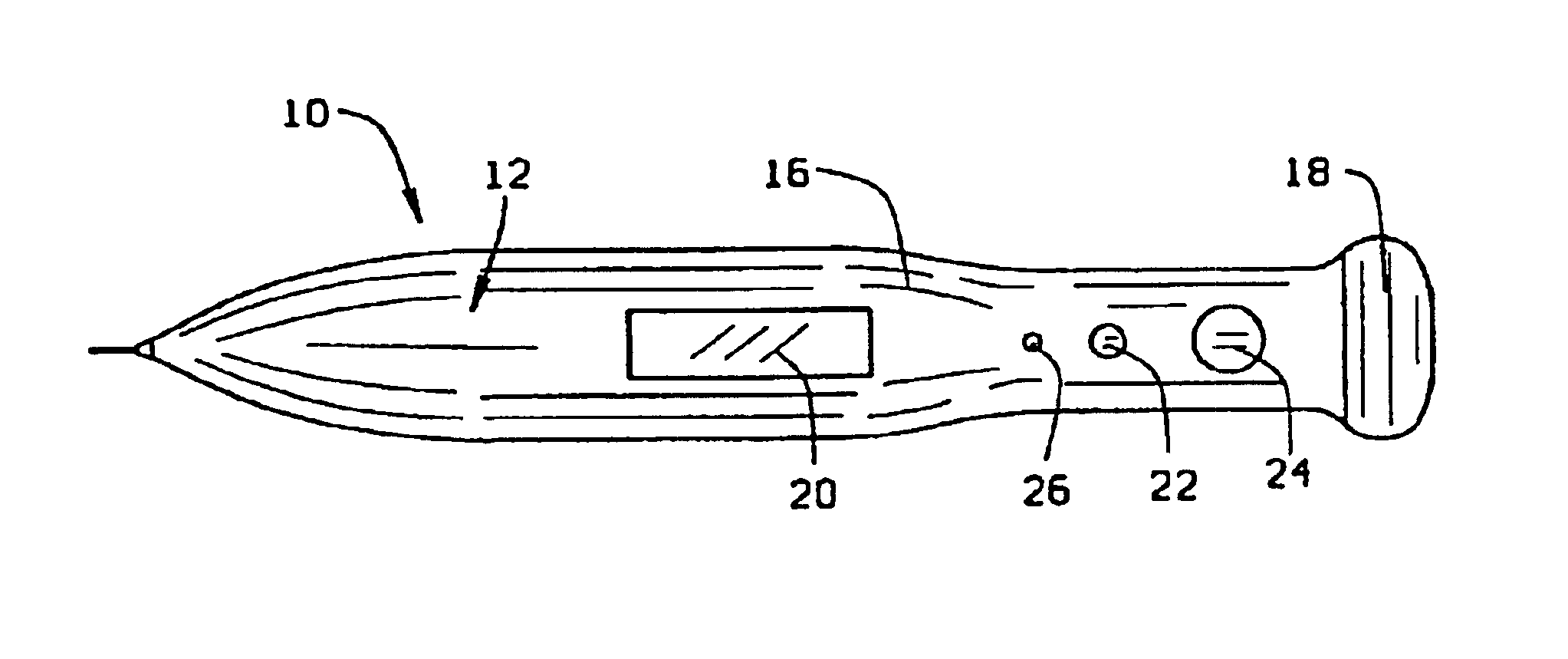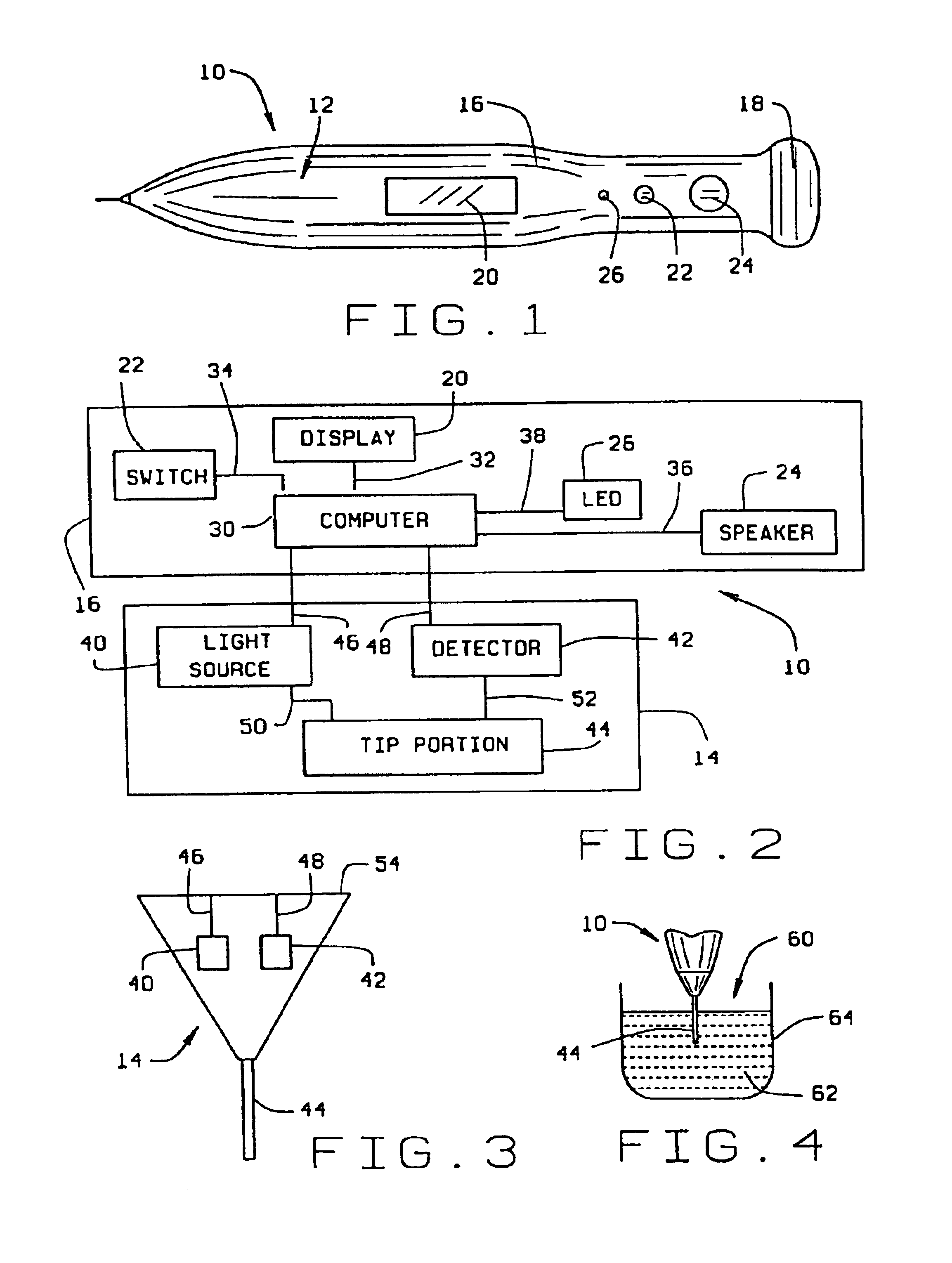Micro-invasive method for painless detection of analytes in extracellular space
a micro-invasive and painless technology, applied in the field of micro-invasive methods for painless detection of analytes in extracellular space, can solve the problems of reducing affecting the detection efficiency of analytes, and preventing the destruction of skin cells, so as to reduce or eliminate the delay time, reduce or eliminate the discomfort of the subj
- Summary
- Abstract
- Description
- Claims
- Application Information
AI Technical Summary
Benefits of technology
Problems solved by technology
Method used
Image
Examples
Embodiment Construction
[0029]Referring now to the drawings, wherein like numbers refer to like items, number 10 identifies a preferred embodiment of a micro sensor device constructed according to the present invention. As illustrated in FIG. 1, the device 10 comprises a pencil or pen shaped body 12 which includes an integrated sensor head 14, a central body portion 16, and an end cap 18. The central body portion 16 further includes a display device 20, such as an LED (light emitting diode) type display or an LCD (liquid crystal display) type display, for displaying information. The end cap 18, which may be removable from the central body portion 16, is used to allow access into the interior of the central body portion 16. Batteries (not shown) can be inserted into the central body portion 16 to supply power to the device 10, as will be explained. The central body portion 16 may also include an ON / OFF switch 22 which may be used to operate the device 10, a speaker 24 which may be to audibly indicate certai...
PUM
| Property | Measurement | Unit |
|---|---|---|
| diameter | aaaaa | aaaaa |
| size | aaaaa | aaaaa |
| size | aaaaa | aaaaa |
Abstract
Description
Claims
Application Information
 Login to View More
Login to View More - R&D
- Intellectual Property
- Life Sciences
- Materials
- Tech Scout
- Unparalleled Data Quality
- Higher Quality Content
- 60% Fewer Hallucinations
Browse by: Latest US Patents, China's latest patents, Technical Efficacy Thesaurus, Application Domain, Technology Topic, Popular Technical Reports.
© 2025 PatSnap. All rights reserved.Legal|Privacy policy|Modern Slavery Act Transparency Statement|Sitemap|About US| Contact US: help@patsnap.com



